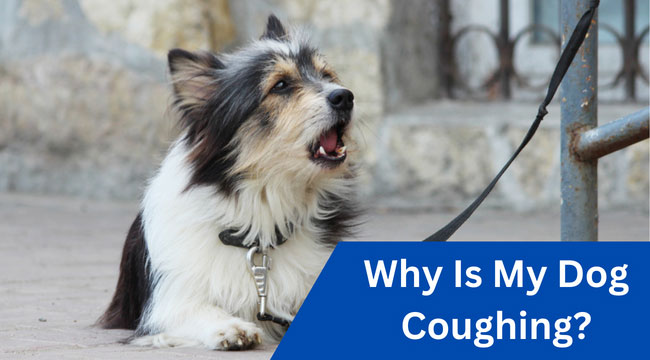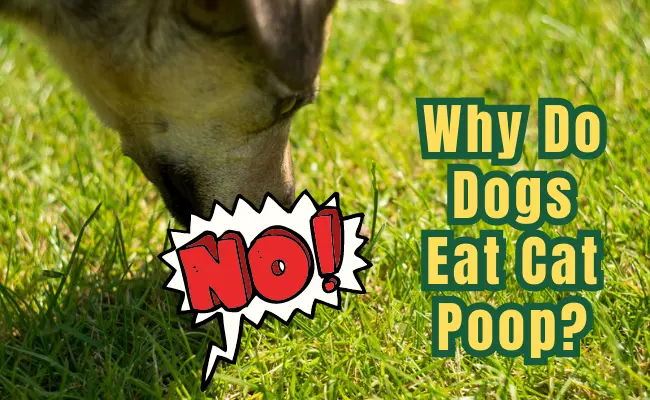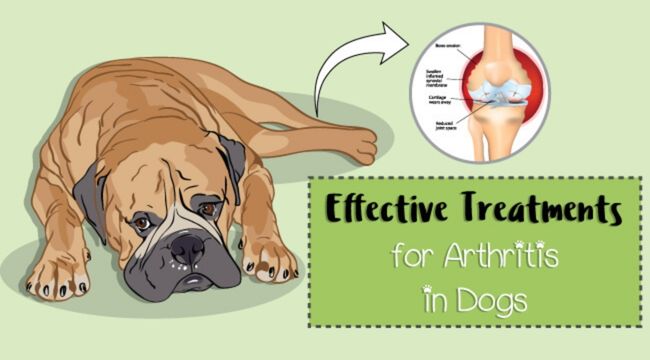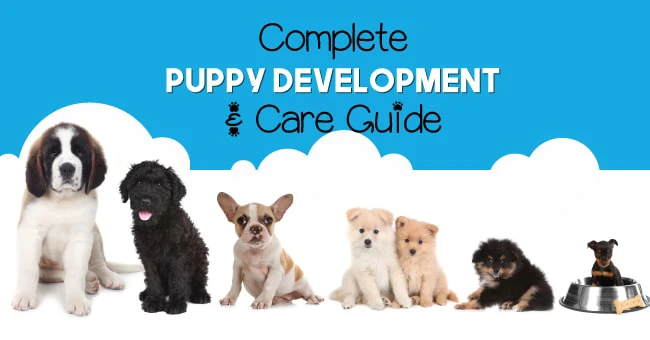
Waghound.com is an Amazon Associate, and we earn from qualifying purchases.
If you’re a dog lover too, you know that taking care of a puppy is one of the most important responsibilities we have. Sadly, many of us don’t really know how to do that. We end up being less than informed and mess up our puppy care resulting in complications or behavioral quirks later in their life.
WagHound has compiled a complete puppy care guide with a puppy growth chart for 2020 that answers some common questions posed by dog and puppy owners.
If you are a puppy owner, this guide is perfect for you because it contains a step-by-step puppy development guide, complete with a dog growth chart. This will cover the to-do’s from the dog’s neonatal stage through to adolescence.
You’ll also find answers to common queries like, “How big will my puppy get?”, “When do dogs stop growing?” and more!
Understanding The Importance Of Puppy Development
It’s important that every dog owner understands the importance of proper puppy development.
For your puppy to have a healthy and happy life, you need to make sure that they are properly taken care of—that includes knowing your puppy is developing as they should be, in every aspect of his growth.
Our puppy development guide not only covers the nutritional needs of a puppy but also looks at their socialization and behavior training needs. This will be a great support to you in raising a good dog—one to be proud of!
Additionally, you’ll have complete knowledge of knowing when their development is healthy and normal, having a better sense of when to act if there are any problems.
Common Q&A Related To Puppy Development
Before we dive into the detailed step-by-step development guide, let’s scroll through some of the few FAQs first.
Even if you know them, it’s won’t hurt to have a refresher and who knows… you might learn something too!
One of the most popular questions regarding puppies is:
1. When Do Puppies Open Their Eyes?
Unlike popular belief, puppies don’t just open their eyes suddenly. They are born with their eyes closed, opening them sometime during the second week after birth.
First, a small gap appears in-between their eyelids and you’ll see them peering through it. It’s unbelievably cute!
Over the course of a day, their eyes will fully open; however, some puppies jump the gun and open their eyes one to two days earlier than others.
2. When Do Puppies Start Walking?
Most puppies will find enough strength to get up on their feet in their third week. They will still be wobbly at first, but by the end of the week, they will start walking.
3. What are the Stages of Puppy Socialization?
To help prepare your puppy for the human world, you need to guide them through a puppy socialization process. This allows the puppy to become unafraid of new experiences and to view humans as friends.
There is another important phase in a dog’s life, asides the “Puppy Socialization Period”, known as the “Teenage Dog Fear Period”
So, during the puppy socialization period, you need to take your puppy everywhere and introduce them to new experiences.
They need to see as much of the world as possible to ensure they can adapt and accept the changing environment. This stage starts when the puppy is three months old; they start getting nervous about the world around them. They get tense and act panicky in and around unfamiliar events and people.
Teenage fear in dogs starts when the dog is between six and twelve months. Even if the puppy is fully socialized, you might need to refresh his memory by going through the program again.
4. How Much Should My Puppy Weigh?
Many dog owners are concerned about the growth rate of their puppies. It’s not uncommon for them to ask questions like “I have a Labrador (or any other breed), how much should he/she weigh?”
Said questions are commonly followed by statements such as “I feed my dog such and such ounces of food, is this enough?”
In truth, there is no definitive answer to this question. There are, however, guides such as puppy growth chart and graphs to help you roughly estimate the proper growth of your dog.
All the required charts, graphs, and tools (included in the article) are here to help you recognize the condition of your puppy’s growth.
5. Does the Growth Rate Vary With Different Breeds?
In a way, yes. The correct answer requires a bit of explanation.
The difference doesn’t lie in the breed type only. A dog’s growth (and even personality) vary between breeds, individuals between each breed and even between littermates.
For example, think of people— siblings aren’t all the same, even if they come from the same family. A similar concept applies to dogs too.
So, the same logic follows with dogs—there’s no exact answer to the differences in puppy growth rates.
6. How Big Will My Puppy Get?
Well, the answer lies in the graph itself, it totally depends on your breed of dog.
That being said, there are ways to recognize the proper development of a puppy’s growth.
Yes, you read it right! You can get a rough idea of the differences in puppy growth rate by separating them by size—it’s an efficient way to see any significant differences between dogs.
For your convenience, we’ve divided dogs into five separate groups. They are:
- Toy
- Small
- Medium
- Large
- Giant
Following this puppy growth chart will help you understand the difference in growth rates between a large and small-sized dog. It will also give you an idea of how long they will keep on growing.
From Puppy to Adult Dog- 3 Phrases of Maturity
Although it’s not surprising, many don’t really know when a puppy becomes a dog. What makes a dog different from a puppy?
Well, there are actually three phases a puppy experiences on the route to becoming an adult to become an adult. They are –
- Physical Maturity
- Mental Maturity
- Sexual Maturity
These three things don’t happen simultaneously or in a set order. This can be a little confusing because it also varies from one breed to another.
Keep on reading, we’ll cover each of these in order.
Physical Maturity- Puppy Growth in Chart
The physical maturity of a dog depends on its size at each stage of development, and it is reached at various stages—every dog grows at a different rate and stops growing at a different age.
The chart below will give you an idea of what we’re discussing. The blank squares indicate that by that point, the dog will have finished growing.
Therefore, this chart essentially answers another potential question: “When do dogs stop growing?”
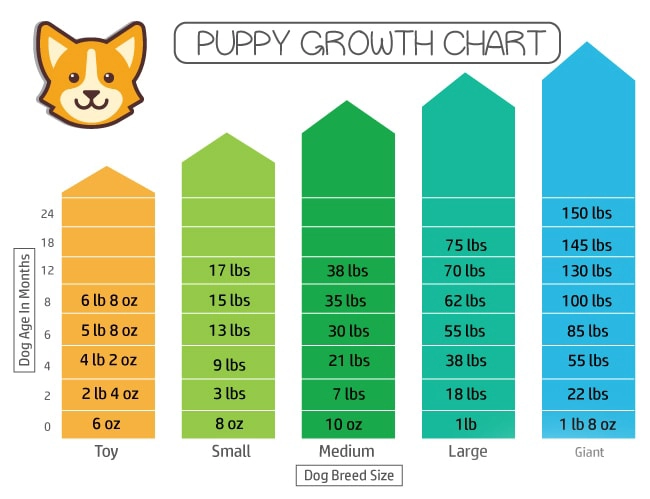
Not only does the chart show a dog’s growth, but it also provides an approximate weight that your dog should be at during different stages of development.
If you encounter difficulties in interpreting the chart, here’s a summary of the growth chart based on dog size.
- Toy sized dogs like Toy Poodles take 6-8 months to stop growing.
- Small and medium-sized dogs like Mini Schnauzers and English Springer Spaniels tend to reach complete growth around 11 months. They grow up to adult height by 9 months.
- Large-sized dogs like German Shepherds complete their growth between 18 and 24 months, although they reach their adult height within the first year.
- Giant dogs like Great Dane continues to grow until they’re 3 years old. Dogs bigger then this will grow for even longer.
Some believe that by observing a puppy’s size, we can predict how large they will become. For instance, you might have heard something like, “Look at the size of its paws! He’s going to be a big dog!” Unfortunately, apart from considering the overall growth pattern, there is no dependable method to accurately determine a puppy’s eventual growth or size in advance, not even by measuring paw dimensions. Did you know that breed size isn’t the sole factor influencing growth? Gender also plays a significant role.
Physical Maturity: Male and Female Puppies
The graph you saw earlier is for an average-sized dog, but there are differences in male and female dog growth. Males are generally bigger and heavier than female dogs of the same breed and age.
The difference is clear in large breed adult dogs, but it’s not that noticeable in smaller breeds and young puppies.
The reason? In short, it’s encoded in their DNA. Gender will always have an upper hand in determining the dog’s final size unless influenced by external situations.
If you ever feel your dog is gaining weight far past what the guideline has indicated, there’s a chance you might be overfeeding the dog. A check-up with your veterinarian is definitely recommended.
There are, however, a few additional factors that are somewhat within your control; things like neutering, diet, and general healthcare.
Physical Maturity: Neutered Puppy
Neutering essentially means removing the sex hormones. These hormones also carry instructions to tell the dog’s body to “stop growing’
When a dog is neutered before reaching his final size, he may continue growing longer than usual because of the lack of sex hormones. A neutered dog usually grows up to be taller than its siblings.
The growth from neutering comes at a price. Dogs neutered are more prone to suffer from cruciate ligament tears and hip dysplasia.
There is also a theory that neutering impacts your dog’s appetite; however, there are many people who disagree with this theory.
Neutering won’t affect your dog’s body weight if you regulate food properly.
Read on to learn more about feeding below.
Physical Maturity: Feeding Effects on Growth
Proper food will always result in proper growth, it’s that simple. But many dog owners struggle with this on a regular basis.
The role of diet in puppy development and growth shouldn’t be taken lightly.
Underfeeding your puppy may lead to poor growth of your puppy whereas overfeeding will make your puppy be obese.
Take a look at the following section to know what problems overfeeding and underfeeding may pose to your dog’s health and overall growth.
#a. Underfeeding Your Puppy
Starving puppies are rarely seen these days, but we’ve used the term “underfeeding’ to classify puppies who are malnourished because they are not being fed properly.
Puppies need to get the proper amount of nutrition and care, especially in the early stages of development to grow into a healthy dog. Without a balanced diet suitable for specific breeds, your puppy may suffer from poor growth and various health problems.
You may be feeding your puppy a lot, but it might not be the right one that supports its growth.
Did you know that overfeeding is a form of malnutrition too?
#b. Overfeeding Your Puppy
Obesity in puppies and adult dogs is a result of overfeeding; in fact, it’s one of the most growing problems in the world.
The consequences of obesity are far worse than most can imagine.
The sudden speeding up of growth can damage a puppy’s joints. In addition, the risk of other problems such as diabetes and heart problems spikes.
“Ad Libitum Feeding” Practice:
In this practice, a puppy is given full access to food. The idea is that the puppy will eat what he needs and not more.
This idea was very popular for a time amongst breeders; however, a study was carried out that compared 48 Labrador Retrievers who were fed ad libitum with puppies on a more restrictive diet.
The study wasn’t huge, but the practice was discouraged as the Labrador Retrievers in the study had a greater chance of getting joint problems than the rest of the puppies.
In conclusion to dog overfeeding, we can safely say that there is no exact weight guide for your puppy.
You’ll have to follow the charts to dog weight at different ages and for dogs of different sizes. Remember that male dogs will be heavier than females.
Stop worrying about the scale and focus on your gut. If you’re still having problems, consult your vet.
Physical Maturity: Healthy Puppy Weight Guide
If you’re still unsure, why don’t you go through this checklist and see if your puppy is the right weight?
#1. No Visible Ribs
A puppy under six months old should not have visible ribs; however, not all breeds fall into this category. Some racing breeds have a few ribs visible as they mature.
#2. Ribs Can be Felt
If you run your hands down your puppy’s sides and not feel his ribs, then he may be a little overweight. The ribs should be covered by a thin layer of fat, but can be still felt from the skin.
#3. Puppy Has a Waist
Take an overhead look at your puppy. If his sides go in at his waist, then he’s okay! (FYI, the waist starts just before his hips and rump.)
#4. Puppy Has a Tuck
Look at your puppy from the sides. You are specifically looking at how his tummy looks. The tummy should rise on a gentle slope just before disappearing between his back legs.
Feeding Instructions for Puppies Failing the Checklist
When you can see the ribs, feel the knobbles or see the hips, you are dealing with an underweight puppy. If they’re on a balanced diet, you can increase their portion.
Overweight puppies should have their daily food intake measured and if necessary, reduced.
It’s always a good idea to add or subtract a meal, rather than making an existing meal bigger. This makes the small individual meals throughout the day more effective—healthier for a dog.
Sexual Maturity: When Will My Puppy be Able to Breed?
A dog reaches sexual maturity first, even before physical maturity. It takes around a year and 8-9 months for a puppy to mature sexually.
This is most commonly seen in large breed dogs, but even if a puppy is very much a puppy – he can still technically breed.
Let’s now have a look when the male and female puppies get sexually matured.
#1. Sexual Maturity for Female Puppies
In the last stages of the second year, a female puppy will come into season; however, there have been many cases where a female puppy experiences heat right after her first year.
But note: it’s not recommended to start breeding puppies at such a young age. It can be harmful to a puppy’s health, so don’t rush it.
Give your puppy time to grow and be healthy.
#2. Sexual Maturity for Male Puppies
A male dog will also be sexually mature right at the same time as a female puppy. They will start showing interest in the female puppies. You can assume that they can breed at that time, but again, it’s your responsibility to make sure it doesn’t happen.
Mental Maturity: When Will My Puppy Calm Down?
A puppy stays a puppy for a long time. Even after he has reached physical and sexual maturity, your puppy’s brain needs the longest time to develop.
Your puppy will exhibit various silly and excitable behaviors, even in his second year. Some puppies need more than that to fully mature, mentally.
A word of advice: don’t confuse mental immaturity with a lack of training. With training, even very young puppies can be taught to behave.
Let’s breakdown puppy development on a week-by-week basis. This will help you understand puppy development even if you’re starting halfway.
Stages of Puppy Development & Necessary Care
We will cover every stage of puppy development in this section, starting from the day they’re born. Each stage is unique and requires different levels of care.
You need to be aware of the needs of your puppy as they develop, step-by-step.
This guide below will tell you the do’s and don’ts at any given stage.
1. Puppy at 0 to 2 Two Weeks – The Neonatal Stage
The newborn stage lasts around 2 weeks. After birth, the puppy remains deaf and blind. At this time, they’ll mostly sleep and nurse on its mother’s milk.
An orphan puppy will need feeding every two hours.
Additionally, a newborn puppy doesn’t have any teeth and can’t regulate his body temperature. That’s why he’ll require heat from the mother or another artificial heat source.
In this stage, the puppy will grow rapidly and will double his birth weight in a matter of 10-14 days.
2. Puppy at 2 to 4 Weeks – The Transitional Stage
After the neonatal Stage, the puppy will start to open up their eyes. They will also notice things in their surroundings and react to sounds light and movement.
Their teeth will start to come out and will move around a bit. They won’t have the strength to stand but will crawl to move. Even if they stand, chances are they will stumble a lot.A 2-week-old puppy will recognize its mother and siblings. They will not require anything other than their mother’s milk.
3. Puppy at 3 to 4 Weeks – Awakening of Senses
In between 3-4 weeks, you will notice that your puppy’s senses have grown rapidly. They are constantly alert and aware of their environment.
They might even recognize you if you’re frequently with your puppy.
You should take special care at this point not to startle or make sudden movements around the puppy. This can negatively affect the puppy’s development and personality.The puppy should be around the mother as much as possible as this is the point—it’s where they “learn to be a dog” and act around other species.
4. Puppy at 4 to 7 Weeks – Socialization Period
When your puppy reaches 4 weeks—a month—they will start to learn the most important things related to social development, including learning to interact with siblings and not biting all the time.
The puppy will also learn to understand who is in charge, i.e. his mother. She will start weaning him and teaching him manners.
Around this time, you’ll need to start feeding your puppy external food. Be sure you give the puppy food that’s tailored to its needs—some breeds have special needs. Start with small amounts and increase daily.
Interact with your puppy, as this will help them get to know and recognize you.
Don’t separate them from the mother or siblings for more than 10 minutes. The mother is in charge of discipline at this point—you shouldn’t interfere here.
Note: When your puppy reaches the age of 6 weeks, you should think of vaccinating him to guard against many health problems later on. We have a complete guide on Dog Vaccination for your reference.
5. Puppy at 8 to 12 Weeks – 2nd Socialization and Fearful Period
Not all dogs pass through this “fearful” period, but it’s safe to assume they will. It’s best to be prepared for them to be terrified of everything around them for a while.
Help your puppy ease through this stage by avoiding all sorts of loud noises or harsh discipline. Plenty of human contacts is highly recommended at this stage. It’s a good time for leash training, simple commands, and crate training.
You’ll see a noticeable change in your dog’s development; they’ll sleep through the night and have better control of their bladder and bowels.
Make sure not to bring the dog into areas with stray dogs, because your puppy is particularly vulnerable to infections and diseases at this time.
6. Puppy at 3 to 4 Months – The Juvenile Stage
At around 4 months time, a puppy is considered to be in the juvenile stage of his life. They will be more independent and explore their surroundings further.
They may sometimes ignore basic commands due to their new-found independence.
You will also notice that they will test your authority by play biting or something similar. You should play with him as much as you can, but do not wrestle or play tug of war.
During this stage, positive reinforcement should be applied when puppies ignore commands. Wrestling and similar body sport will give your dog an okay sign to fight with you anytime—this should be avoided.
7. Puppy at 3 to 6 Months – The Ranking Period
At this stage, your dog will start acting “bratty” and will exert more of their independence. They will constantly test your limits and may do things at their will.
It’s not unusual for them to show dominance over children and other family members. They start to rank everything and where they stand within a pack.
You should always keep your dog on a leash when in public. Keep them under basic obedience training at all times and not be fooled by your own confidence.
The dog will also start teething around this time, so give them toys to chew to relieve the pain.
If you decide to spay or neuter your dog, now is the time to do so; it’s when hormonal changes occur.
8. Puppy at 6 to 18 Months – Adolescence
This is the final stage of puppy development, where your puppy becomes a pooch. This will be a fun time for you and your pooch in which they’ll learn a lot.
Your dog will also have lots of energy to play and run around.
Although they might look big and you’ll know they’ve passed through to sexual maturity, remember that your dog is still a puppy at this point. They haven’t yet gone through the mental development required to be an adult.
Increase their workload to include agility training and herding; it’s the prime time to do so.
You can also keep training to keep them acting non-aggressive and non-threatening towards other animals.
After this point, most of the hard work required during puppy development is done. Your puppy may experience another “fearful” stage, but don’t worry—work through it as you did before.
Conclusion
We’ve included as much puppy development information as possible so that you can follow it without facing any difficulties.
However, remember they are all rough guides; some puppies will grow or act a little differently than what the guide says. Use it as a guide.
Don’t panic. Changes don’t happen instantly or within a day. You’ll see everything will work out just fine.
Enjoy the time you have with your puppy because one day you’ll see they’ve grown into an adult dog. You’ll miss the days where they used to fit into your lap, so make the most of it!
